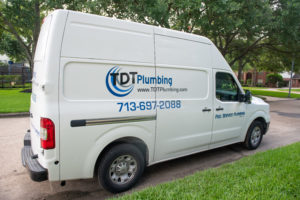
Trenchless Sewer Repair vs. Traditional Excavation
Regarding sewer repair, two main methods are commonly used – trenchless sewer repair vs traditional excavation. Both methods have advantages and disadvantages, but one factor many homeowners consider when choosing between them is cost.
Understanding Trenchless Sewer Repair
To fully understand the cost comparison between trenchless sewer repair and traditional excavation, it is important to have a clear understanding of how trenchless repair works. As mentioned earlier, two main techniques are used in trenchless repair – pipe relining and pipe bursting.
Pipe relining involves inserting a new lining into the damaged pipe and curing it using specialized equipment. This creates a new pipe within the old one, without the need for extensive excavation.
Pipe bursting, on the other hand, involves breaking apart the old pipe while simultaneously pulling a new one through its place. This method may require some digging, but it is typically a minimal impact compared to traditional excavation.
Both techniques in trenchless repair are non-invasive and can be completed in just a few hours, making them a popular choice among homeowners looking to minimize disruption and time spent on repairs.
Now that you have a better understanding of how the trenchless sewer repair method works, let’s dive into the factors that can affect its cost. Factors such as the extent of damage, location of pipes, and specific technique used can all impact the overall cost.
The Cost of Trenchless Sewer Repair
The cost of trenchless sewer repair can vary depending on factors such as the extent of damage, the location of the pipes, and the specific technique used. On average, homeowners can expect to pay between $80-$250 per foot for trenchless repair.
While this may seem like a higher upfront cost compared to traditional digging. It is important to consider the long-term savings. With trenchless repair, there is no need for extensive digging and restoration of landscaping or hardscaping, which can add up in costs.
Additionally, because trenchless repair is less invasive and requires less time to complete, homeowners may also save on labor costs. When it comes to the cost of trenchless sewer repair, there are a few key factors that can affect the overall price. These include:
- Extent of Damage: The severity and extent of damage to your sewer line will play a significant role in determining the cost of repairs. If the damage is minimal and only requires a small section to be repaired or replaced, the cost will likely be lower compared to more extensive damage.
- Location of Pipes: The location of your sewer pipes can also affect the cost of trenchless repair. If they are located in a hard-to-reach area or under structures such as a driveway or patio, it may require additional equipment and labor, resulting in a higher cost.
- Technique Used: As mentioned earlier, there are two main techniques used in trenchless repair – pipe relining and pipe bursting. The cost may vary depending on which technique is most suitable for your specific situation.
- Additional Repairs: In some cases, other repairs or replacements may be necessary along with the sewer line repairs, such as fixing damaged connections or replacing a damaged septic tank. These additional repairs will add to the overall cost.
Overall, while trenchless sewer repair may have a higher upfront cost compared to traditional excavation, it offers potential long-term savings and can be a more efficient and less disruptive option.
Understanding Traditional Excavation
Traditional excavation is the more traditional and well-known method of repairing or replacing sewer lines. It involves digging up the entire length of the damaged pipe and replacing it with a new one.
This method is typically more time-consuming and labor-intensive, requiring heavy machinery and extensive manual labor. It also requires significant excavation, which can disrupt landscaping and hardscaping on your property.
Furthermore, traditional excavation can potentially lead to additional costs if any unexpected obstacles are encountered during the digging process. This can include tree roots, rocks, or other underground structures that may need to be removed or worked around.
Despite its drawbacks, traditional excavation does have some advantages. Typically less expensive upfront compared to trenchless and may be a better option for larger sewer line repairs.
However, it is important to weigh the costs of excavation against potential long-term savings and the impact on your property. In some cases, trenchless sewer repair may ultimately be a more cost-effective option in the long run.
The Cost of Traditional Excavation
On the other hand, the traditional excavation method may have a lower upfront cost, but it can come with additional costs that may not be initially apparent. These can include repairing any damage to landscaping or hardscaping, as well as potential delays and disruptions to daily life.
Because traditional excavation involves digging up the entire sewer line, there is a higher risk of damaging other utility lines or structures, which can result in even more expenses.
In some cases, traditional excavation may be necessary if the damage to the sewer line is too extensive or if there are certain structural limitations. However, it is important to carefully consider all factors and potential costs before making a decision.
Other Considerations
When comparing costs between trenchless repair and traditional excavation, it is also important to keep in mind any potential warranties or guarantees offered by the repair company. In some cases, trenchless repair may come with a longer warranty and potentially save on future repairs.
Additionally, it is important to choose a reputable and experienced company for either method of sewer repair. While cost may be a factor in your decision, also consider the quality and reliability of the repair work.
Comparing the Costs
In general, trenchless sewer repair tends to be more expensive upfront compared to traditional excavation. However, when factoring in long-term savings and potential additional costs, it may end up being a more cost-effective option.
Trenchless repair is often completed much faster than traditional excavation, which can also save on labor costs and minimize any disruptions to daily life.
Final Thoughts
When it comes to sewer repair, there are two main methods – trenchless repair and traditional excavation. While both options have their costs and benefits, it is important to consider the specific factors that may affect the overall cost for each method.
Trenchless sewer repair may have a higher upfront cost compared to traditional excavation. With its minimal digging , faster completion time, and potential long-term savings, it can end up being a more cost-effective option.
On the other hand, traditional excavation may have lower upfront costs, but additional expenses such as restoring landscaping and hardscaping. It also takes longer to complete and can cause disruptions to daily life.
